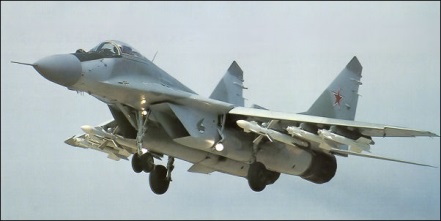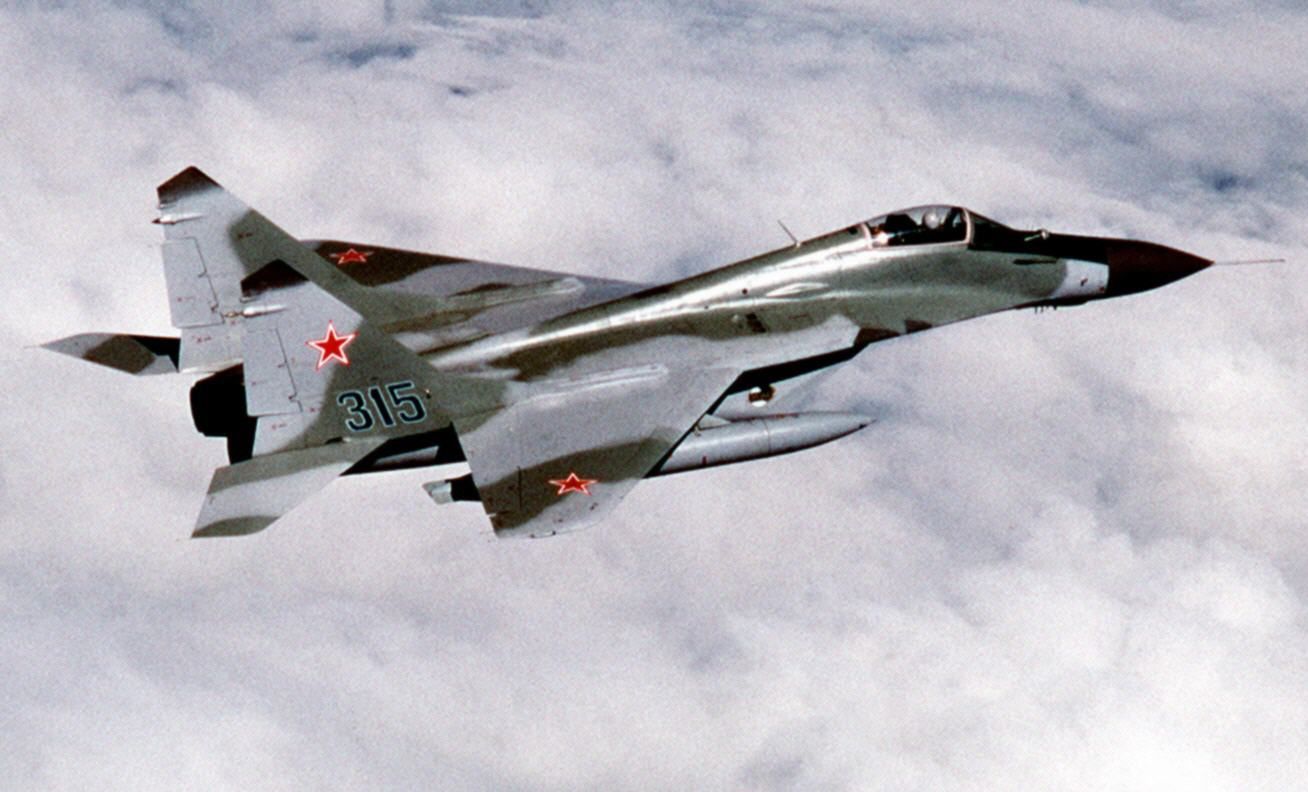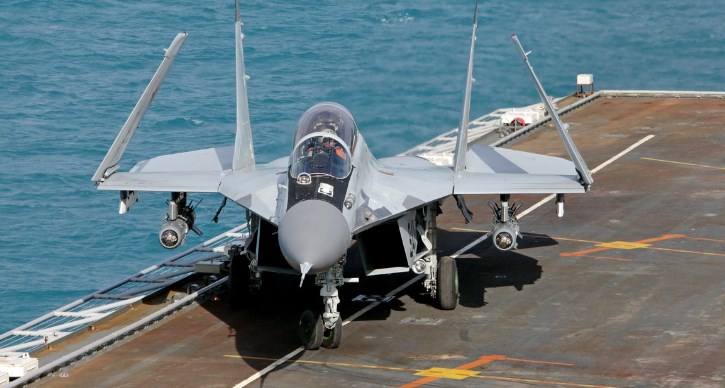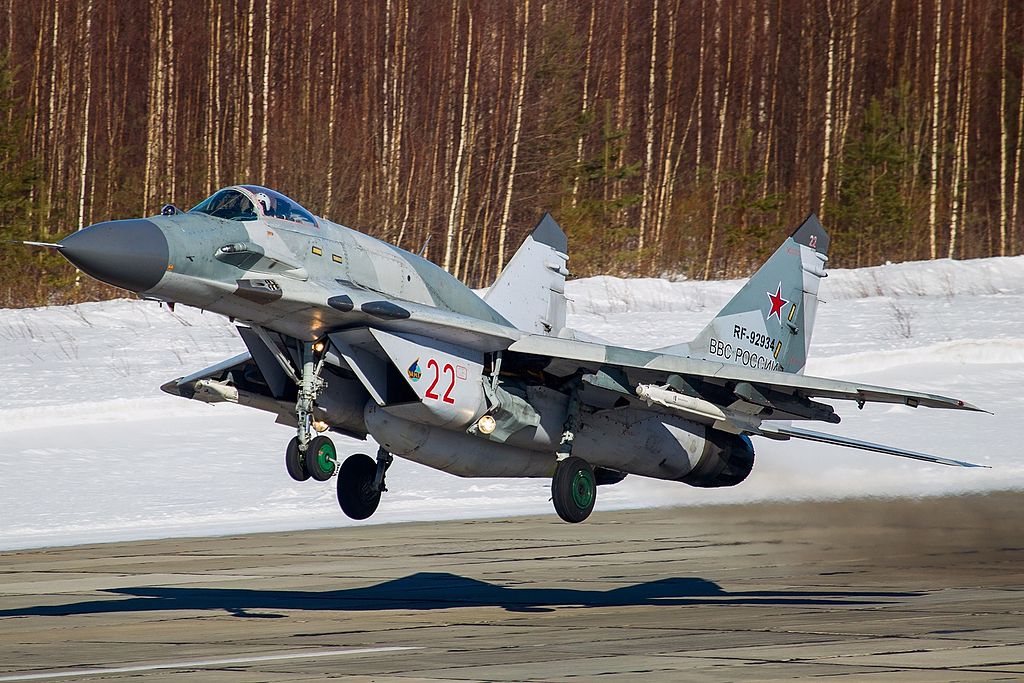
MiG-29 ‘Fulcrum’The Fulcrum is a true multi-role fighter and is easily compared to the US F-16 Falcon. Introduced in 1982 as an air superiority fighter, this role was taken by the Su-27, allowing the very agile Fulcrum to broaden its role into the air to ground and close air support tasks. One of the more unique features is the helmet mounted site, reducing a pilot’s workload in combat; this combined with superior maneuverability makes this aircraft a deadly opponent in a dogfight at close range. Another major difference from western aircraft of this generation is the relatively primitive, and thus quite robust and reliable flight controls, making the Fulcrum aerodynamically stable and not relying on ‘Fly By Wire’ technology. Like all Soviet aircraft the MiG-29 is easily able to operate from austere forward airfields.
It is believed that the Soviet Union operated about 1000 MiG-29s in 1991, about 400 of which were distributed to its successor states. Of course in Northern Fury the dissolution does not happen and production/modernization continues as a priority. Although it’s difficult to predict how many of this type would be in operation, this was one of the few aircraft being produced at the end of the 1980s, so production could easily continue unabated. The following assumptions help considerably in allowing us to work out the number of aircraft that would be available in our alternative history.
Production would be maintained at the pre-1991 level throughout as a minimum.
As it became clear that war would occur (late 1992), production would increase.
Export sales would only be entertained within the Warsaw Pact.
There would be ongoing impetus to modernize.
Production Rate: The collapse of the Soviet Union virtually halted Fulcrum production for several years; however, in Northern Fury we don’t have that problem. If there were 1000 airframes available in 1991, over the 10 year production run (1981-1991) approximately 100 per year were built. So as a baseline an additional 200 aircraft will be available by the start of 1994.
Considering an increase due to an imminent war is much more speculative, in theory you could triple output by putting on three shifts at the factory instead of one, but that is unrealistic and does not consider resources (human, financial and feeder parts) and would be a sure fire tip off the west that you had something in mind. Perhaps a 40-50% increase in production as a SWAG; so another 50 airframes.
In total then the Soviet Union will field about 1250 MiG-29s by the start of Northern Fury. These will be employed almost exclusively in the VVS (Frontal Aviation) and equip front line aviation Regiments. The few going to Warsaw Pact countries is in addition to these numbers and amounts for a small number:
Bulgaria: 6 new in addition to the 16 received in the 1980’s;
Czechoslovakia: 4 new in addition to the 20 received in the 1980’s;
Former East Germany: 24 delivered before unification and remaining in service with NATO;
Hungary: 2 new in addition to the 28 already delivered;
Poland: 12 delivered before Poland renounced its membership in the WP;
Romania: 17 originally delivered in the 1980’s;
Serbia: 16 delivered in the 1980’s;

Modernization: The Soviets were masters at mid production improvements to their aircraft and the Fulcrum is no exception to this trend. The main variants that we will deal with are:
MiG-29A (Project 9.12) Fulcrum-A: Original basic model, focused on air to air warfare with a secondary ground attack role. About 620 were built with around 120 sent to WP allies leaving 500 available for service. In Northern Fury the first 100 or so have been upgraded to the ‘SMT’ standard, a program which is ongoing.
MiG-29UB (Project 9.51) Fulcrum-B: A small number of two seat training versions with limited combat capability were produced for conversion training. 197 were built with about 20 sold to WP allies.
MiG-29S (Project 9.13) Fulcrum-C: Introduced to service in 1986 these included internal fuel and improved avionics in an enlarged spine, called the ‘Fatback’. These were not exported and there were 200 built for Soviet service
MiG-29SM (Project 9.13M) Fulcrum-C: An evolution of the ‘S’ with the ability to carry guided munitions. Approximately 228 produced before the Soviet Union collapsed
MiG-29K (Project 9.31)
Fulcrum-D: The
first naval version of the MiG-29 which was capable of operating off of
an aircraft carrier flew in 1988 but was not produced due to the
selection of the Su-33 as a carrier borne fighter. The Su-33 however has
not strike capability so in Northern Fury, enough MiG-29Ks were produced
as replacement or follow on aircraft (depending on the situation) for
the aircraft carriers. Therefore 48 were built.

MiG-29M (Project 9.15) Fulcrum-E: This evolution made the Fulcrum a ‘multirole’ fighter; however it was historically timed to match the fall of the Soviet Union, and only six were built. In Northern Fury all or most of the MiG-29 production post 1991 was of this type, so about 200 of this type is available.
MiG-29SMT (Project 9.17) Fulcrum-E: An upgrade process bringing MiG-29A up to the ‘M’ standard, so far 100 older aircraft have been modernized and the programme is proceeding at the rate of 15 per month.
